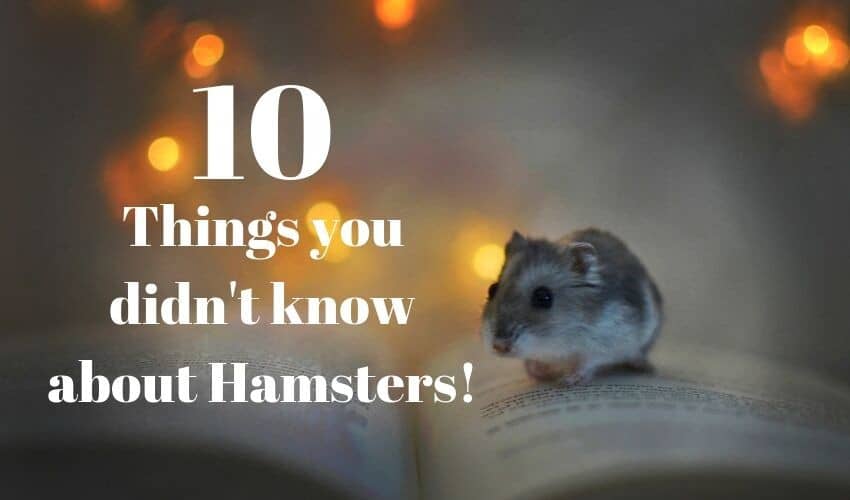You may be surprised to know a few things about hamsters. We have all seen them, either at pet stores or at friends’ homes. They are cute, certainly, but we don’t know much else about them. In fact, hamsters have some very unique features to offer as pets. To learn 10 things you didn’t know about hamsters, read below.
Table of Contents
1. Hamsters Are Omnivores And Eat Meat And Love Eggs.
You may not know this about hamsters, but in the wild, they will eat crickets and mealworms when they are able to. They can eat these at home as well, either frozen or live. As a part of a balanced diet, a hamster may have 1-2 crickets weekly. A few mealworms will also do nicely.
Hamsters may also have tiny portions of meat, but only kinds that are not too salty or fatty. This eliminates ham, bacon, steak, etc. Instead, a hamster may have lean beef, lean chicken or turkey. The proper amount of meat for a hamster is a thumbnail-sized slice, roughly. You can serve this to them once weekly.
Another alternative is a slice of boiled egg once a week. Be sure to feed only one type of protein 1-2 times weekly. Excess protein can be hard on a hamster’s body. After all, hamsters should be eating hay and other fiber-rich foods, primarily.
2. To Stay Clean Hamsters Take Sand Baths Frequently
Sand baths are the main way that hamsters use to stay clean. This is a little known fact about hamsters. They will roll about in the sand, getting it all over their body, and then shake it off again. A proper bathing sand is abrasive enough to remove dirt particles but fine enough to be gentle. A good bathing sand will also soak up odors and oils.
When making a sand bath, never use sand from anywhere but the pet store. Sand from the outdoors or elsewhere will almost certainly be too scratchy.
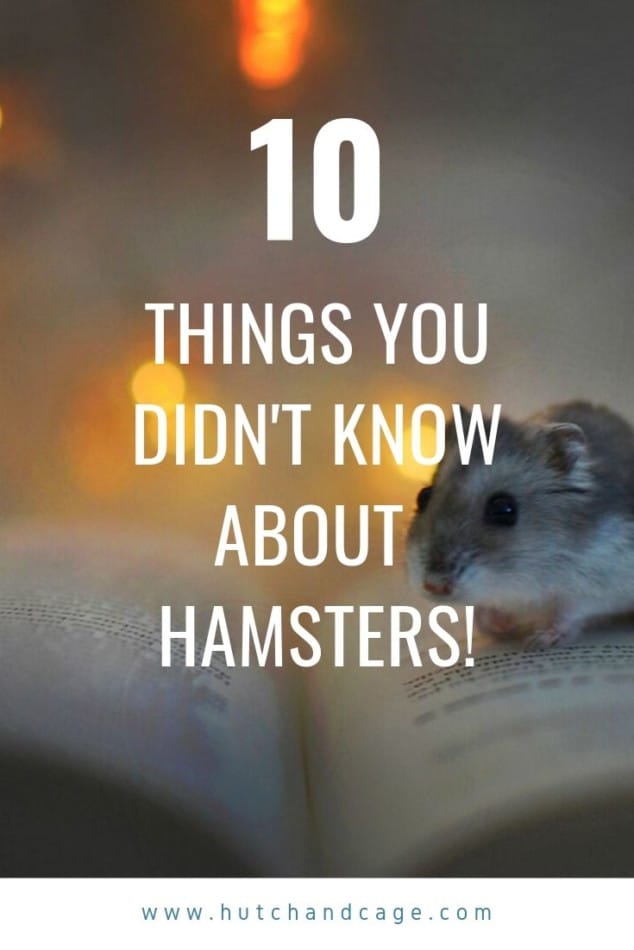
How to make a Hamster Sand Bath at home
First off, a common mistake is to mix up bathing sand with bathing dust -which is far too dusty! This dust can get into the mouths and lungs of hamsters, causing respiratory problems and breathing difficulty.
Once you’ve selected your bathing sand, find a heavy, reasonably-sized bowl (about the size of a cereal bowl, a little bit smaller than this is okay). The sides should be low enough that your hamster can climb over easily and it should have enough weight that it will not get knocked over as your hamster rolls about freely.
You can leave this bowl set up in your hamster cage, but if you do, your hamster may mistake it for a litter box. Check the sand to make sure it remains free of droppings and the like.
Some prefer to provide a sand bath at certain times only. This can work if your hamster is prompt to use the bath. Otherwise, you may wish to wait around for them to hop in.
Supervised sand baths will reduce the likelihood that your hamster will get a chance to use it as a litter box.
Sand baths are very important things to know about hamsters, so they may keep themselves fluffy and tidy. One must ensure that there is one available to them frequently.
3. There Is Not Just One Hamster Breed Out There
In fact, there are 5 types of hamsters primarily. First and foremost is the Syrian hamster, the breed where it all began. Syrian hamsters paved the path toward hamster domesticity.
Syrian Hamsters
The Syrian hamster is the biggest hamster breed, reaching 6-7 inches in length. Sometimes they are quite fluffy, causing them to be labeled ‘Teddy Bear’ hamsters. In reality, these are just long-haired Syrian hamsters. Syrian hamsters prefer to be kept by themselves, and depend on people for company.
Dwarf Hamsters
Dwarf hamsters are the next main breed. They are more friendly and sociable than Syrians and can be paired with other Dwarves. This is something some may not know about hamsters of the Dwarf variety. Dwarf Hamsters are also much smaller than their Syrian counterparts, which is where they got their name.
Dwarf hamsters are anywhere from a diminutive 1.5-6 inches in length. This depends on the sub-breed of Dwarf hamster, of which there are a few.
The sub-breeds of Dwarf hamsters are Winter White Russian, Campbell’s, and Roborovski.
Winter White Russian Hamsters
Winter White Russian hamsters are typically friendly, as most Dwarf hamsters are. Their name comes from the fact that, during the winter, their coats will turn white if they live outdoors. Usually, White Winter Russian hamsters are brown or gray. They like to hang out in same-sex pairs, and get along best this way.
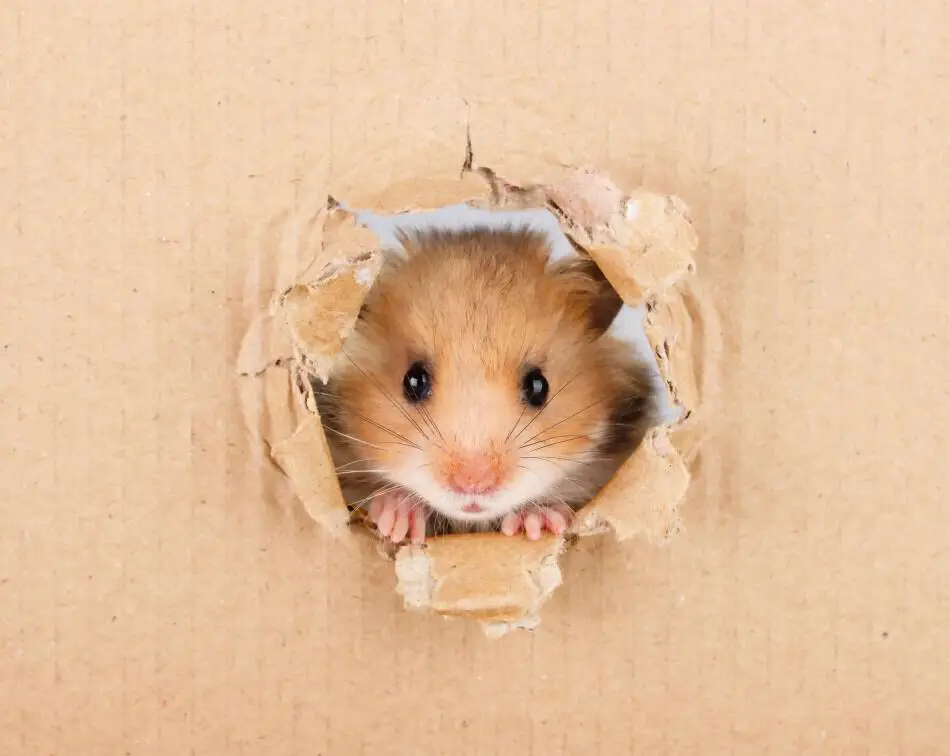
Campbell’s Hamsters
Next are Campbell’s hamsters. These hamsters are little homebodies. You may have to coax them from their cage, of which they are very protective and possessive. Fortunately, they are happy to socialize – with a little encouragement.
Campbell’s hamsters prefer to be in same-sex pairs, or with a brood for familiarity. They are available in many colors, including brown, gray, tan and white. They are 4-5 inches in size, generally.
Roborovski or Robo Hamsters
The last of the Dwarf breeds is the Roborovski hamster. Thankfully, these have a nickname: ‘Robo’ hamsters. Robo hamsters are by far the smallest hamster breed available. They are a teeny tiny 1.5-2 inches in size.
These hamsters move quick, and may not be ideal for kids – rather, an adult or two willing to take the time to tame the energetic little guy. Robo hamsters are really quite adorable, so it pays off ultimately.
Chinese Hamsters
The Chinese hamster is also small compared to Syrians, but they are not a Dwarf breed, technically.
Chinese hamsters make unique and beautiful pets. Physically, they are slender when you comparethem to other hamster breeds. They are dark and soft, with a pretty stripe down their back.
Personality-wise, the Chinese hamster is very shy. The trade-off is that they are also very polite. Once you know about hamsters, and gain their trust, they tend to be calm and attentive. Most hamsters like to be on the move and are more twitchy.
4. Hamster Teeth Grow Continuously
You may not know this about hamsters, but their teeth grow constantly. This is common among rodents of all kinds. To keep this in check, they have some specific requirements dietarily.
For one, a hamster must always have access to hay. They graze on this frequently, which in turn grinds their teeth down – not to mention the benefits of the fiber-dense plant nutritionally.
Along with this, hamsters need wood to chew on. At pet stores there are hamster toys especially for this purpose, as well as blocks, sticks, and other wood pieces they can chew. This wood must be obtained from a pet store only. At a lumber yard, the wood is not yet sanitized and can bring bugs and mites with it -something to avoid, clearly.
Crunchy vegetables are another way that hamsters can control the growth of their teeth. Hamsters can have veggies a few times a week. Crisp varieties, like carrots, cucumbers and broccoli, are some of the most useful in this way.
Hamster pellets, which should be fed to them according to the portion size on the box, are also great for a hamster to chew. A diet containing all of these foods will keep them in optimum health orally.
5. Domesticated Hamsters Originated In Syria
In the wild, hamsters prefer areas that are warm and dry. Sand dunes, steppes, and the edges of deserts are their preferred places to reside. They store their food, and a fun fact about hamsters is that the Syrian breed is known to consume alcohol. This is because the fruit they store will sometimes ferment. Syrian hamsters have a larger liver than some of their hamster counterparts, for this purpose specifically.
The first hamsters to be domesticated were Syrian hamsters, at the time known as Golden hamsters. A nest of 11 Golden-colored hamsters was discovered by an archaeologist in 1930. He caught and transported the hamsters to the Hebrew University. From there, they quickly multiplied and made their way across the world, growing in popularity.
Up until this time, hamsters had been seen but were considered pests or even hunted. It is fortunate that the archaeologist, by the name of Aaron Abrahams, happened upon this den of hamsters. He was compelled to take them by their extraordinary beauty. Indeed, Syrian hamsters are a lovely breed, and there are many more unique breeds available today.
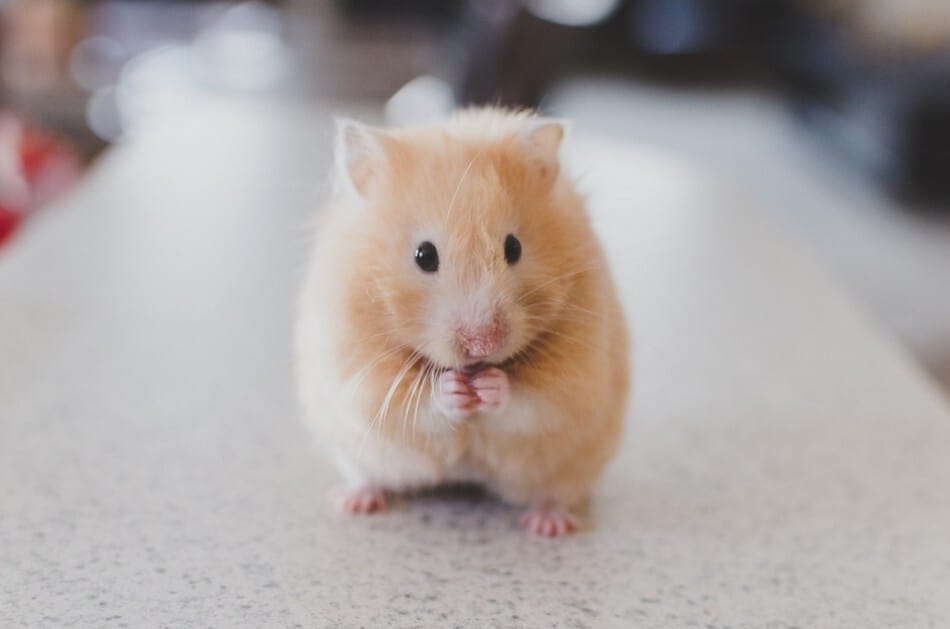
6. Hamsters Need Lots Of Bedding In Their Cage
While a cage is a good start, a hamster cage is nothing without bedding! Hamsters depend on bedding to feel comfortable and safe. It is also a necessity in order for them to maintain their hygiene.
In the wild, hamsters like to hide out in leaves, bushes and other natural detritus. Bedding mimics this nicely. This means it appeals to their natural instincts, and will help them feel more at home.
Luckily for hamster owners, there are plenty of types of hamster bedding that are both affordable and effective.
Top tip: Paper makes a great bedding material but never use inked paper or newspaper as this can become harmful when wet.
Try white computer paper or brown paper bags. Papers with marker pen, or printed ink (such as newspapers), should not be used by any means. Hamsters like to chew, and there is a chance they will consume some bedding, and the ink, consequently. This ink is toxic and can make them sick. Not only this, but urine can smear the ink, which risks your hamster getting it on themselves.
To create proper paper bedding, out of plain, soft paper, tear the paper to bits. Putting it through the shredder will also do the trick.
Paper bedding is absorbent of both liquids and odors, and hamsters are said to find it quite comfy.
TOP TIP: Aspen Wood shavings are a great hamster bedding variety
The second most affordable, natural and non-toxic bedding option is wood shavings. Most woods are in fact terrible for this. Aspen wood shavings, in particular, are one of the top hamster bedding materials out there.
Cedar and pine you will want to avoid entirely. Cedar and pine are not as soft as aspen and can cause splinters. Worse, when these woods come in contact with urine, they create toxic fumes. This poses a real danger, clearly.
Alternately, aspen wood shavings are fume-free, toxin-free, and splinter-free. This bedding material is pleasantly scented, soft, and comfy. Aspen wood shavings are also quite affordable, and can be found at your local pet store.
Aspen shavings should never be purchased anywhere other than a pet store. Lumber yards offer wood shavings that are not sanitized. They contain bugs, mites and other things you will want to avoid, obviously.
At a pet store, it is advised to get decent quality aspen wood shavings. The cheapest brands tend to be a bit dusty. All aspen wood shavings, however, are great in terms of affordability. Hamsters love to use aspen wood bedding to root around and play.
7. Hamsters Store Food In Their Cheeks
You have probably seen chipmunks with their cheeks full. You may not know this about hamsters, but they do this as well! It is an adorable habit that has a practical use. Hamsters use their stretchy cheeks like little foraging baskets, to carry food to and fro. They will ultimately take this food back to their home, to eat and hide, respectively. Hamsters are industrious fellows, and always looking to the future.
As pets, hamsters are extremely grateful for treats and snacks. They will stuff these in their cheeks with enthusiasm. Indeed, hamsters adore treats of all kinds. Fruit and veggies are without a doubt the most healthy.
Hamster’s Favorite Veggie Snacks
Broccoli is a hamster favorite. Just make sure to keep an eye on portion, as always. This veggie has plenty of fiber, which is great, but it might make your hamster a bit gassy. It depends on the hamster individually.
Broccoli is a crisp, crunchy veggie that hamsters can really whet their teeth on.
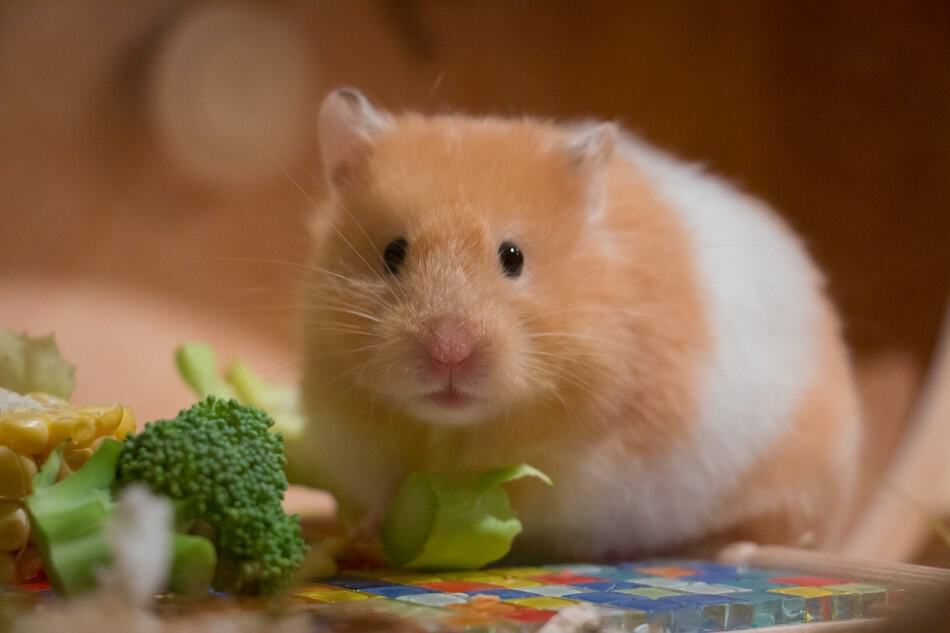
Hamsters also love carrots. This veggie is a bit sweet, so it is extra important that it is portioned properly. Natural sugars like those in veggies and fruits are fairly healthy, but they can still affect the bloodstream drastically. In hamsters, this can cause health issues.
For a larger hamster, such as the Syrian hamster, a few slices will suffice. A Dwarf hamster should have only one or two.
The same rule applies to all veggies when it comes to hamsters. They can also indulge in sprouts, cucumbers, and romaine lettuce, a few times weekly.
Hamster’s Favorite Fruit Treats
Fruit is basically hamster candy. Not nearly as unhealthy as real candy, of course, but for hamsters, just as desirable. The top fruits for hamsters are probably berries. Hamsters can enjoy blueberries, strawberries, raspberries, and blackberries alike. Blueberries in particular are actually really beneficial both to humans and to hamsters nutritionally. They are packed with antioxidants, which basically eliminate toxins and help the body run more smoothly.
Hamsters may also have apples. Just make sure to remove the seeds before offering a tiny slice, as apple seeds contain a toxin called cyanide. This can affect the sensitive body of a hamster harmfully. Pears and peaches are also okay. A hamster should never be offered citrus of any variety.
8. Hamsters Are Escape Artists
Being the tiny, wiggly animals they are, hamsters are quite adept at escaping their cage. They traverse small spaces with ease. Hamsters can get lost in the house easily, and can even come to harm if not supervised properly. This means that an escape-proof cage is of utmost importance.
What this calls for is a cage with bars that are very close together. A metal cage rather than a plastic one is also advisable. Hamsters do like chewing, and a plastic cage gives them too much opportunity.
With the proper cage, you will not have to worry. The next step is to ensure that they are also safe when they leave the cage, to explore.
9. Keeping A Hamster Safe Outside The Cage
The biggest risks to be aware of about hamsters outside of their cage are aggressive pets, doors, and poisonous plants and substances, among other dangers. Keep any pets that could react negatively far away. Next, let everyone in the household know that you are letting the hamster out of the cage. Tell them to open doors carefully and to tread watchfully. Lounge chairs that open and close should not be used while a hamster is nearby.
Move any potted plants out of the area. Make sure there are no large crumbs your hamster could eat and make themselves sick. Block off any holes or spots they could get lost in duly.
Ideally, keep your hamster in a small room and do not let them loose in the house. This introduces too many variables to the picture.
Safety warning: Some exercise wheels can affect hamsters harmfully
Surprisingly, exercise wheels can cause hamsters injury. This happens with exercise wheels that are too small, which forces hamsters to bend their backs unnaturally. Rungs should also be avoided on the running surface and sides, as hamsters tend to catch themselves in these.
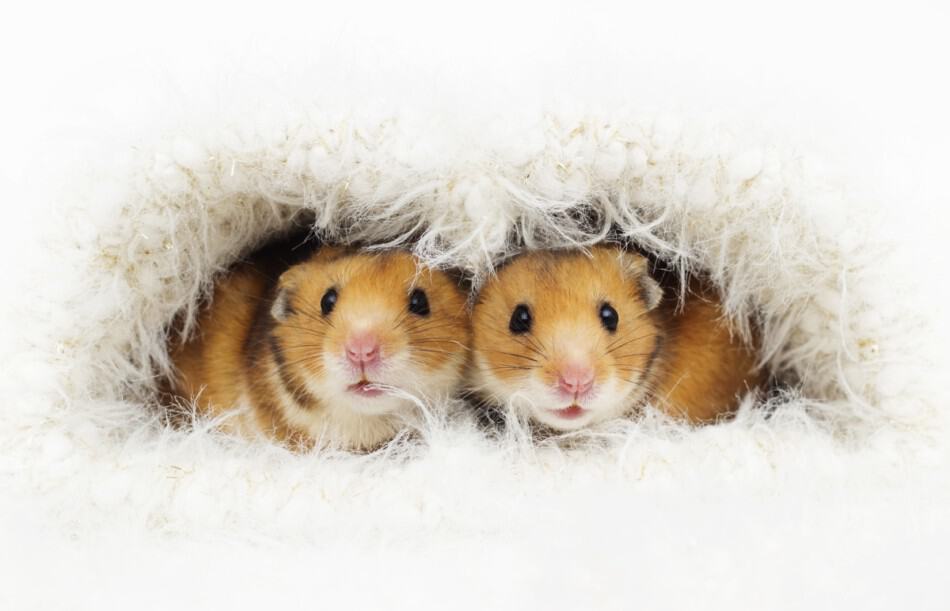
This is not to say that hamsters cannot use exercise wheels. In fact, these wheels are one of their favorite ways to move. They can use medium to large-sized exercise wheels, without rungs and with a nice, flat surface. A quality exercise wheel is the perfect way for hamsters to get their wiggles out, night or day.
Hamsters can also leave their cage to explore, for additional exercise. This can only be done under special circumstances, however – refer to the above. Hamster toys from the pet store are also an excellent idea. The little guys love these. A tip about hamsters is that their toys can be rotated in order to keep them interesting and new.
10. Hamsters Are Little Hoarders
Hamsters hoard bits of meals, snacks, treats, and even toys. They have favorite items that they like to keep safe: food that they are saving for later; items they are proclaiming ownership of. This behavior is a really cute one.
Hamster stashes will contain lots of little odds and ends – just make sure to remove perishable food, like fruit, so it will not rot accidentally.
While hamsters love to play with toys, they also love to hoard them. This makes them all the more important for hamsters to have. They are sure to add the new treasures to their stash. There are plenty available online or at your local pet store, to entertain your little buddy.
Summary | 10 Hamster facts
As you can see, while they are a common pet, there are still a lot of things we don’t know about hamsters, really! There are different hamster breeds, and even sub-breeds. Each hamster has its own preferences when it comes to treats, toys and snacks. Some like company of their own kind, and some don’t. Some like to scurry, and some like to cuddle.
Hamsters are complex critters, and have a lot to offer individually. They also have simple needs. All that they require is a secure cage, quality food, a house, gentle treatment, some stuff to chew, maybe a couple of toys, and they make delightful company.

